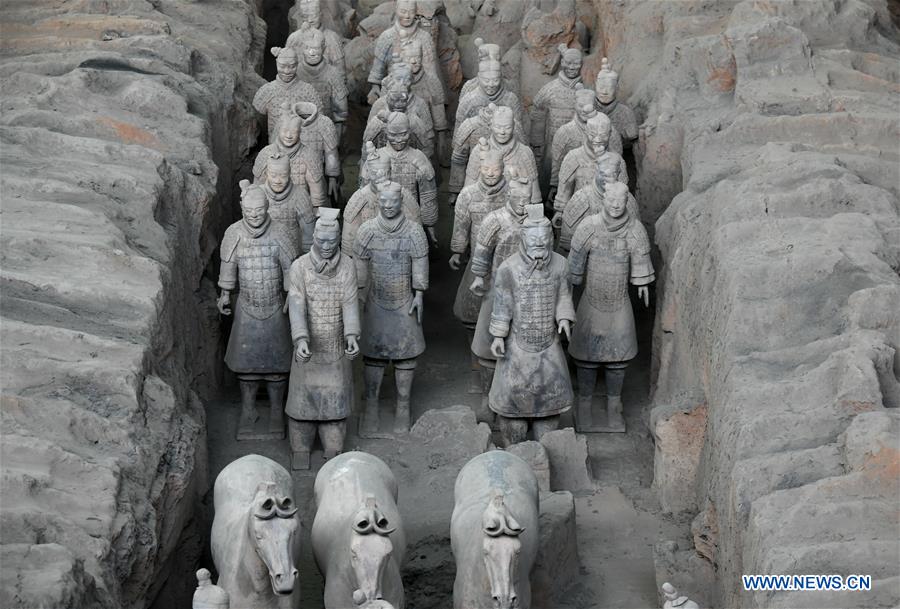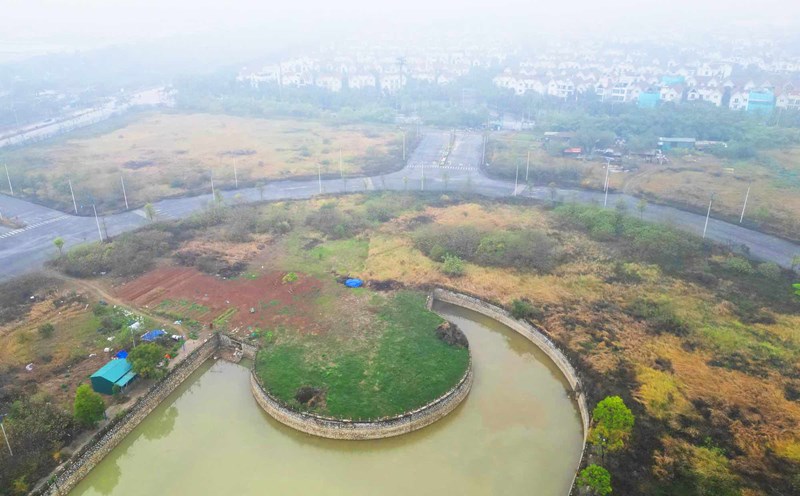A new archaeological discovery has been made regarding the Terracotta Army in the tomb of Emperor Qin Shi Huang in China. Archaeologists have unearthed a rare 2,000-year-old statue believed to depict a high-ranking military commander.
This life-sized terracotta warrior statue was discovered in the mud.
SCMP said that this discovery marks the first time since 1994 that terracotta warrior commanders have been discovered. At the Qin Shi Huang mausoleum site, only 10 high-ranking commanders were discovered among thousands of terracotta soldiers.
Experts believe the Terracotta Army was buried to protect Qin Shi Huang, the first emperor of a unified ancient China, in the afterlife. The mausoleum of Qin Shi Huang, near Xi'an, China, was designated a UNESCO World Heritage Site in 1987 and remains one of the most important archaeological sites in the world.
Zhu Sihong, head of the excavation project, told Chinese state broadcaster CCTV that the terracotta commander was unearthed in “pit 2” and is believed to be the head of the unit. “Based on the location, we believe the statue could be the unit’s highest-ranking military commander,” he said.
Despite being buried for centuries, the terracotta warrior statue still retains traces of its original color. Archaeologist Zhu Sihong pointed out that the silt helped preserve the statue's paint by maintaining stable humidity and temperature underground.
Along with the terracotta commander, two statues of high-ranking officers, five warriors in armor and fragments of chariots and horses were also found.

Chinese archaeologists determined the ranks of the warriors in the Terracotta Army through their intricately detailed headgear, patterned armor, and their posture of clasped hands in front.
Qin Shi Huang's Terracotta Army spans an area of over 50 square kilometers and is believed to have more than 600 underground tunnels.
The Terracotta Army was accidentally discovered by local farmers in 1974. It is estimated that there are up to 7,000 life-sized soldiers, horses, chariots and weapons in this giant army.
However, to date, only about 2,000 terracotta warriors have been excavated. Experts believe there are thousands more underground.
In the Qin Shi Huang Mausoleum, the Qin Dynasty Terracotta Warriors and Horses Museum is an important attraction for tourists and researchers.
The excavation pits at the site are numbered, with pit number 1 containing rows of soldiers and chariots, pit number 2 containing over 1,000 warriors and wooden chariots, while pit number 3 contains fewer warriors but is likely to represent a command center.
Excavations at Qin Shi Huang's mausoleum are ongoing, revealing new details about the army and purpose of the terracotta army.
Chinese archaeologists believe that the Qin Shi Huang mausoleum, which took an estimated 38 years to build and involved 700,000 workers, still holds many undiscovered secrets.










